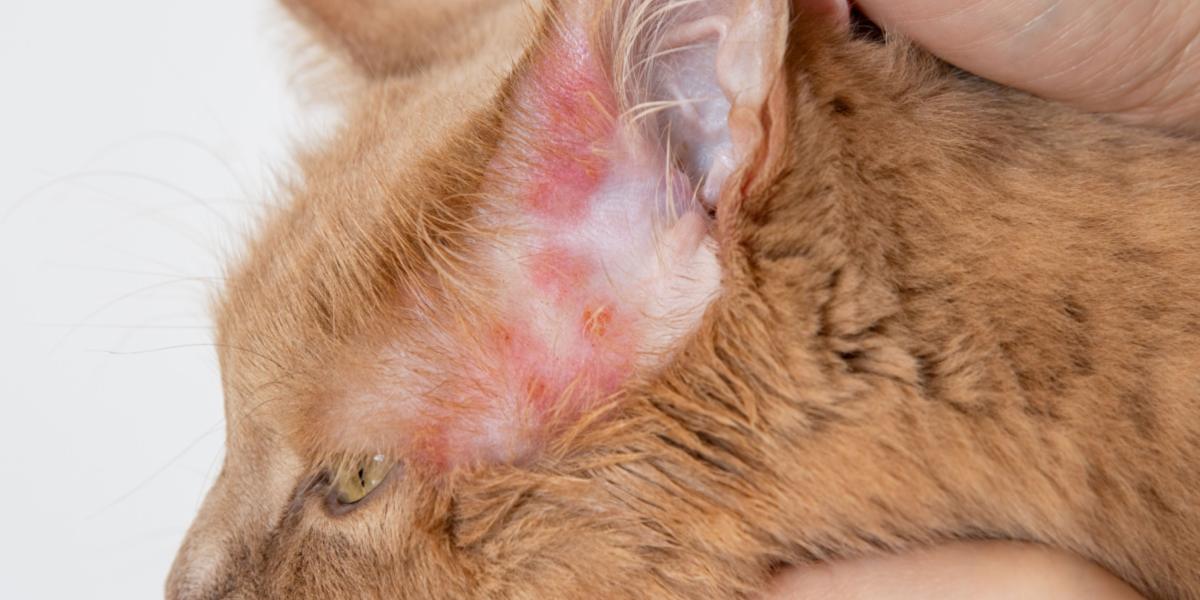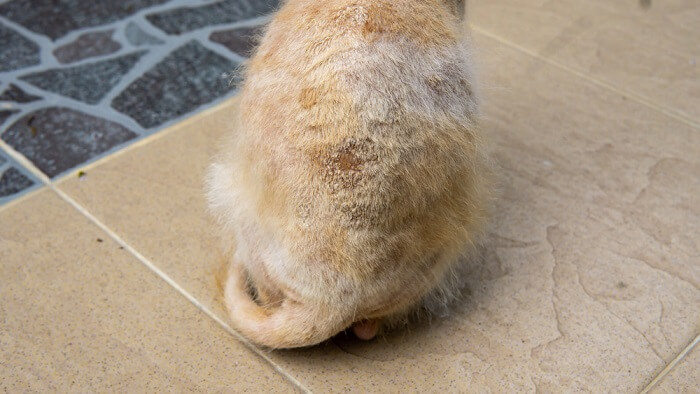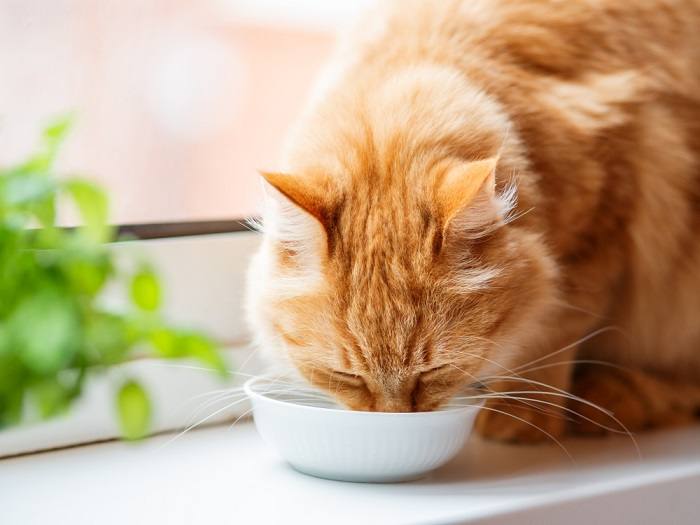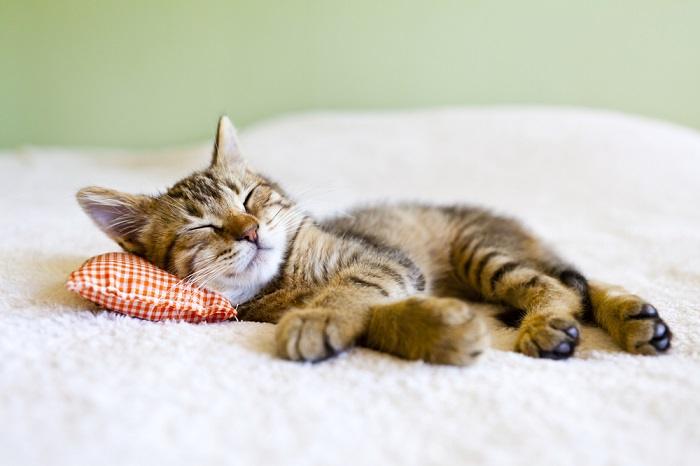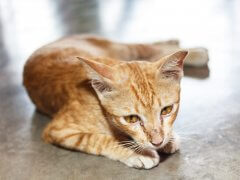In this article, we will take a look at the details of urticaria in cats. Urticaria is essentially hives and rashes. Read on for a simple, clear explanation as to why this condition can develop in your kitty, and what you should do if your cat is affected.
Quick Overview: Urticaria (Hives and Rashes) in Cats
Urgency: If your cat develops a mild rash and is not upset by this, then it is generally safe just to monitor at home, and this will often resolve. However if the rash gets worse, and if the cat is agitated in any way, then you should go to your vet promptly
Home Remedies: Home remedies are not appropriate or needed for this condition
Vaccine Available: No vaccine is available, although immunotherapy (see main article) may be seen by some as a type of vaccine against allergies
Treatment Options: Many mild cases of urticaria resolve on their own after 12 - 24 hours, but in severe or recurrent cases, you should go to your vet. The cause will be investigated and treatment (such as anti inflammatory medication) may be prescribed
May be Linked to: Other allergic diseases (.e.g. respiratory, digestive tract) may happen at the same time.
Diagnosis: The diagnosis is usually made by a physical examination, although extra tests such as skin biopsies may be needed to make a definitive diagnosis.
Requires Ongoing Medication: Most cases do not need ongoing medication, although severe or recurrent cases may need regular anti inflammatory medication, or perhaps immunotherapy to try to prevent episodes.
Common Symptoms: The main sign of urticaria is raised, reddened wheals caused by the reaction of the cat’s skin to the allergic or irritant insult. These wheals appear like variably sized nettle stings (from 0.5cm to 3cm diameter). They may appear as just reddened areas of skin, or they may protrude slightly from the surface of the skin. If so, they may “pit” on pressure (i.e. if they are pressed with the tip of the finger, a small dent will be left, which gradually fills in).
Other Names: Hives, rash, wheals, welts, allergic or irritant skin reaction
What Is Urticaria?
The word “urticaria” is derived from the Latin word “urtica,” meaning “nettle.” The easiest way to explain what urticaria in cats looks like is to say that it resembles a series of nettle stings. Urticaria is more commonly known as hives or rashes.
Technically, urticaria is defined as “localized swelling in the dermis” (the main active layer of the skin). It is a type of dermatitis or inflammation of the skin. The rash is due to localized histamine release in the skin causing blood vessels to dilate. This happens because of inflammation which can be allergy-based or irritant-based.
Cats have furred skin, making it more difficult to see the raised, red welts of urticaria. Urticaria can be an itchy condition, so even if red areas are not seen, cat owners may notice that their cats are scratching at themselves, shaking their heads, rubbing themselves against objects, or grooming excessively.
Urticaria can happen anywhere on the body but is more commonly noticed in relatively hairless areas such as the belly. Areas of a cat’s body that is more likely to be in contact with the environment such as the throat are also commonly affected.
How Common Is Urticaria?
Urticaria in cats is one of the ways that cat skin can react to allergies and irritations. It is thought to be rare in cats but it may be more common than we realize. This is simply because it can be difficult to notice on fur-covered skin.
How Cats Get Urticaria
There are two broad types of urticaria:
- Immunological urticaria is allergy-based. This type is a hypersensitive allergic reaction governed by the adaptive immune system (antibodies and T-cells). This type of reaction can develop after exposure to antigens (types of proteins) in food, fabrics, pollens, mold, cat dander, drugs, and vaccines. Pet allergies are increasingly common.
- Non-immunological urticaria is irritation based. When the innate immune system causes inflammation in response to physical irritation such as heat, cold, physical trauma, bacterial infection, stings (insect or plant), parasites, and chemicals, this type of urticaria in cats develops.
Symptoms of Urticaria in Cats
The main sign of urticaria in cats is raised, reddened wheals caused by the reaction of the cat’s skin to the allergic or irritant insult. These wheals appear as variably sized nettle stings, ranging from 0.5 cm to 3 cm in diameter.
Urticaria can appear as just reddened areas of skin, or the wheals may protrude slightly from the surface of the skin. If so, they may “pit” on pressure, meaning if they are pressed with the tip of the finger, a small dent will be left, which gradually fills in.
Causes of Urticaria in Cats
There are many possible causes of urticaria in cats. A detailed history of your cat’s condition may be taken by a veterinarian to find the root cause on a case-by-case basis.
Possible causes or triggers of urticaria in cats include:
- Insect bites or stings such as wasps, bees, ants, etc.
- Parasites such as fleas, due to an allergic reaction to flea saliva.
- Contact irritation with fabrics, carpeting, detergents, floor cleaners, or even human clothing.
- Drug reaction to antibiotics, medications, vaccinations
- Food allergy
- Inhaled allergens
- Immune-mediated diseases
- Skin infections
- Idiopathic (sometimes urticaria happens without any identifiable cause)
Diagnosis of the Cause of Urticaria
When you take a cat suffering from urticaria to your veterinarian, the following steps may be taken.
1. Detailed History Taking
Your vet will discuss every aspect of your cat’s background and care. There are many possible causes of urticaria, and this history will help to differentiate the various possible causes, such as the ones listed above.
Questions will be asked about other aspects that could relate to cat allergies, including watery eyes, runny nose, congestion, stuffy nose, sneezing, coughing, shortness of breath, or asthma.
You may be asked about signs affecting other parts of the body, such as vomiting or diarrhea. Your home may be discussed, such as if you use hepa filters on your vacuum cleaner, or take any other measures to reduce dust mites in your home. Your cat’s history of parasite control, such as fleas, will also be discussed.
2. Physical Examination
Your vet will check your cat over carefully, examining the skin all over. The vet may also clip some fur in some areas to gain a clearer view of the skin surface.
A vet will often take your cat’s temperature, feel your cat’s body all over (including checking for enlarged lymph nodes), check for any painful areas or swellings, watch your cat move around, and generally examine your cat to look for any abnormalities.
3. Routine Laboratory Tests
Although urticaria is a skin-based disease, your vet may or may not carry out standard in-house laboratory work. This includes hematology (blood count) and biochemistry profiles on blood samples and routine examination of a urine sample.
These tests are usually carried out to screen your cat for any systemic background to the skin reaction that is happening, and in most cases, they will be normal.
4. Dietary Trial
If a vet suspects that your cat has a food allergy, an elimination diet may help pinpoint what is causing urticaria in your cat.
If your cat suffers from recurrent urticaria, a food allergy may be suspected as a possible cause. In this case, your vet may recommend a dietary trial, or a so-called “elimination diet,” giving nothing but a specialized, non-allergenic diet to your cat for 6 – 8 weeks.
If the urticaria episodes stop, this would be strongly supportive of food allergy as a cause. It would then be possible to try different foodstuffs to narrow down precisely which food item is provoking the allergic reaction.
5. Other Tests
- A sticky tape impression or skin scraping may be examined under the microscope. This is called “cytology.” It is meant to rule out various other types of skin disease.
- Rarely, a skin biopsy sample may be collected from one or more of the urticarial wheals. This will then be processed by the laboratory, and the resulting histopathology will give a most detailed description of the precise type of process happening at a cellular level.
- Very rarely, in severe cases, skin or blood tests may be carried out to determine the allergens that may be the culprit causing urticaria in your cat. The allergen levels for different substances are measured, and the results can then be used for immunotherapy.
Your veterinarian will advise you on which detailed investigations are needed.
Cost To Treat a Cat With Urticaria
It is impossible to estimate the cost of treating urticaria in cats. This is because there are so many possible factors going on in the background of individual cases.
Costs could vary from $100 for a simple underlying cause (like a one-off reaction to insect bites) to $4000 or more for an exceptional case of recurrent urticaria when a very detailed investigation is needed.
Treatment for Urticaria
- The best approach to treating urticaria involves discovering the underlying trigger for the reaction. If the trigger can be identified, it can then be avoided, hopefully preventing the recurrence of the urticaria.
- In the short term, most cases of urticaria resolve by themselves. In the same way as a nettle or a bee sting will settle down in humans, the urticaria may resolve itself with no need for treatment.
- If a cat is agitated, itching at themselves, or in discomfort of any kind, anti-inflammatory medication (e.g. prednisolone) may be prescribed by your veterinarian.
- Antihistamines may also be recommended in some cases.
- Rarely, in severe or recurrent cases, allergy shots (or immunotherapy) using the cat allergens most appropriate to your cat may need to be administered. This is determined via blood or skin tests.
Monitoring and Prognosis
Some cases of urticaria are mild and a one-off situation, and will resolve on its own with time.
It is likely that your veterinarian will ask you to observe your cat’s skin closely and to bring them back for a review if the urticaria has not resolved after two days, or if the condition recurs.
Conclusion
Urticaria is an unusual skin reaction in cats that is usually minor and transient. In these cases, it will resolve on its own within 1 – 2 days. In cases where urticaria is long-lasting or recurrent, it’s important to take steps to identify the triggers so that it can be prevented.
Also Read: Why Does My Cat Lick My Hair? A Veterinarian Explains
Frequently Asked Questions
What can cause urticaria in cats?
Urticaria in cats can be caused by many different causes. This includes insect bites or stings, contact irritation, food allergy, drug or vaccine reactions, inhaled allergens, and rarely immune-mediated diseases. Sometimes urticaria is said to be “idiopathic” which means that the cause cannot be identified.
How do I know if my cat has urticaria?
The main signs, as listed above, are a skin rash that resembles nettle or insect stings.
How serious is urticaria in cats?
Urticaria is generally only a temporary, minor problem. If it happens on a recurrent basis, or if there are other signs of illness at the same time, it can be part of a more serious underlying disease.
